The invention of the microwave in 1946, and
it becoming a household staple in the mid-1960s sure was life-changing
for many homeowners. It allows us to enjoy leftovers, and prepare speedy
snacks with minimum effort and time spent. If you’re a fan of your
microwave and want to keep it running for as long as possible, there are
few things you should refrain from to avoid shortening its life-span.
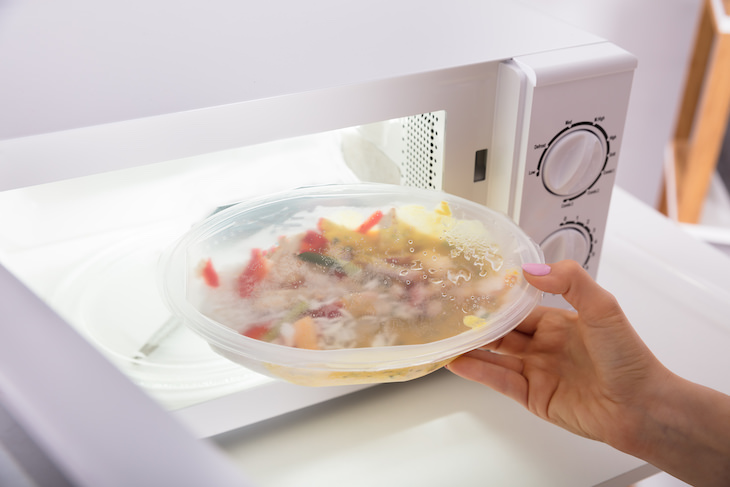
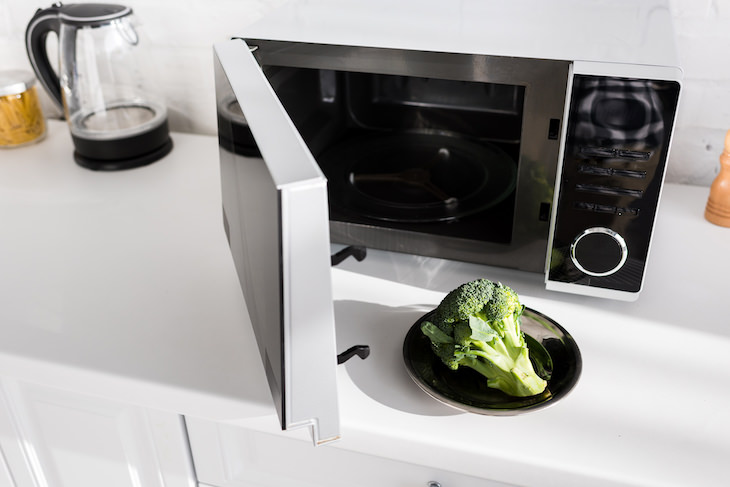
If you maintain your microwave correctly,
its life expectancy should be about nine to ten years. Here are the
risky actions you need to avoid in order to actually make that happen.
1. Forgetting to check if the container is microwave-safe

It’s easy to just chuck a dish in the microwave without giving it too
much though, or assuming that a few minutes of heating won’t do any
damage. That, however, is wrong. It’s important to make sure that the
container holding the meal you’re about to microwave is safe. As most of
you probably know, metal is off-limits for the microwave. Other
containers you should avoid microwaving include aluminum, styrofoam, and
anything that is meant to be used in the cold, like butter tubs or
yogurt containers.
When it comes to plastic, opinions are split. “I would recommend
reheating all food on a plate or switching to a glass container to heat,
rather than keeping food in the plastic container,” said registered
dietitian Melissa Bailey to Reader’s Digest. Any plastic that isn’t
microwavable could melt, and even small smudges of melted plastic inside
the microwave can cause problems. According to the US Food & Drug
Administration (FDA), however, some plastics are deemed microwave safe,
so do check for that label if you want to microwave food in a plastic
container.
2. Microwaving certain foods

While microwaves can be handy in many situations, there are certain
foods that should never be microwaved. Not only will it harm the food
quality, but also the microwave itself. Potatoes and eggs, for example,
can build up pressure when microwaved, and, when they blow up, they send
a mini-shockwave through the unit, which can be damaging.
A safe way to microwave potatoes is to poke a few holes in them with a
fork so that the pressure buildup will have somewhere to go. Whole eggs
cannot be microwaved under any circumstance.
3. Neglecting to clean your microwave
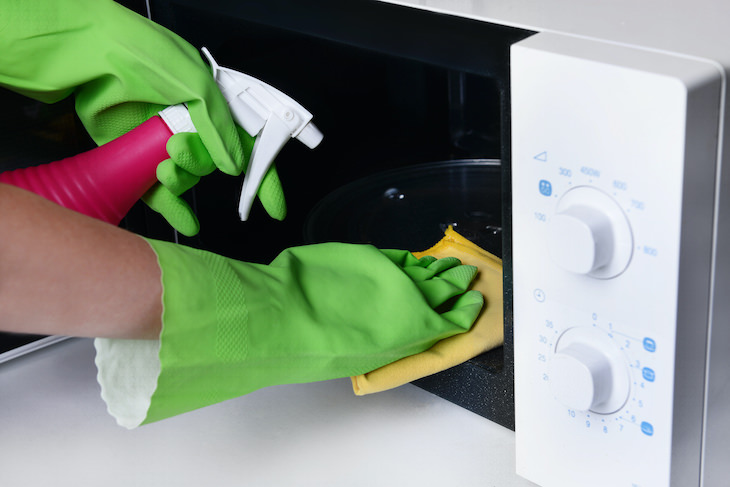

One of the simplest tips for prolonging the
life of your microwave is to clean it regularly. And we don’t only mean
cleaning it when there’s a sizable mess but making sure not to leave
those small everyday stains as well. Food that remains on the sides will
continue to absorb energy in future heatings and will burn the interior
over a long period of time.
This means that your microwave will expend unnecessary efforts to heat
up those lingering remains which will eventually impact the components
and shorten the lifespan of the appliance. For some handy tips on
cleaning the microwave, take a look at this handy guide: Clean Your
Microwave in 3 Minutes with this Natural Remedy.
4. Slamming the door
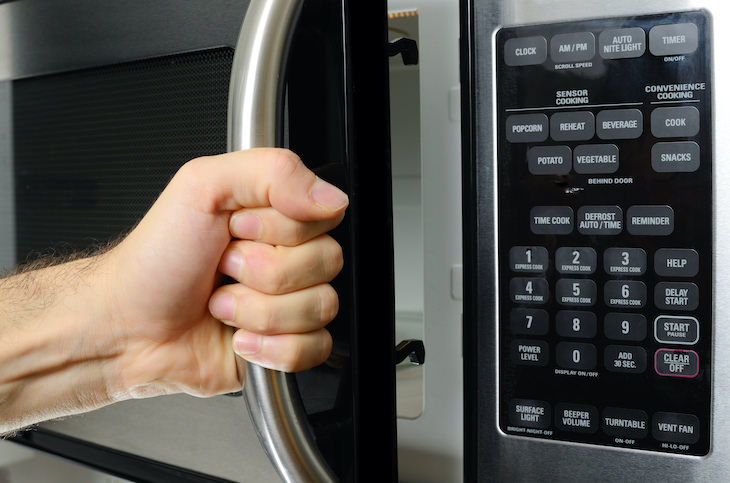

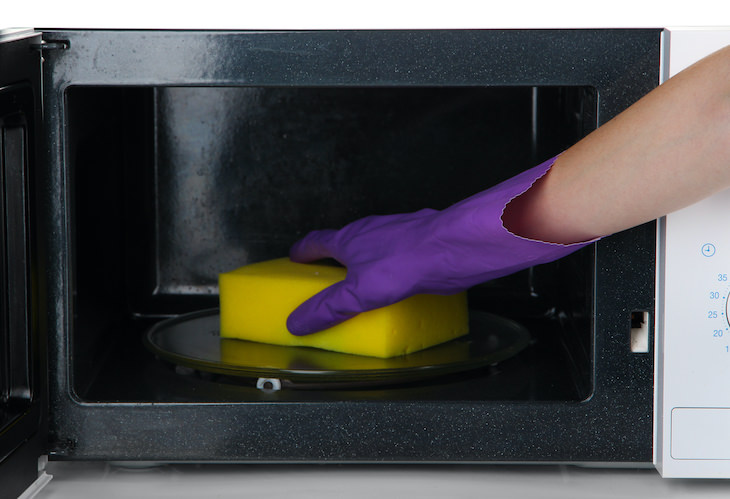
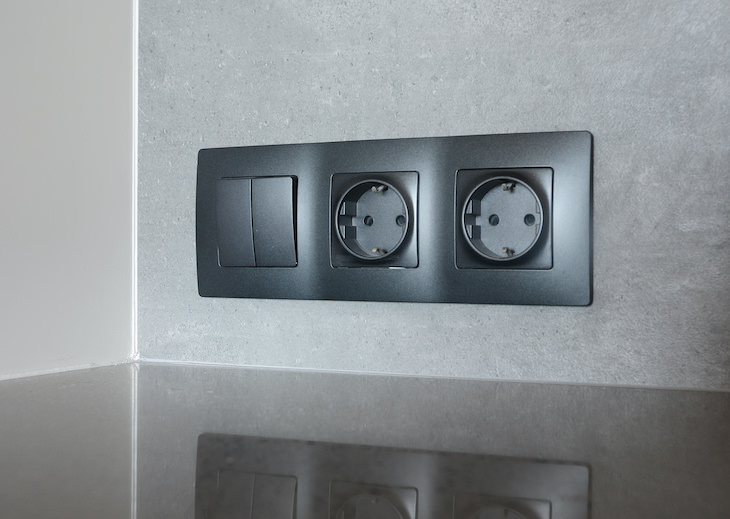

We’re all guilty of not treating our
appliances very gently from time to time, and the infamous closing the
door with your elbow. But when you’re getting something out of the
microwave the next time, don't slam it shut, even if you’re in a rush.
Remember that doing so will shorten the lifespan of your appliance.
“There are actually some quite delicate mechanisms in most microwave
doors, as it’s obviously important they secure properly to keep the
energy on the inside,” according to John Bedford, founder of Viva
Flavor, a site dedicated to helping amateur cooks. Moreover, if the
microwave door gets damaged, it might no longer be sufficient to keep
all the energy in and that could really be a safety issue.
5. Running the microwave empty

This one is easy to do by mistake.
Sometimes we take the dish out of the microwave a few seconds early, and
let it finish its run empty instead of resetting it. If you notice this
happening, it’s important to stop it immediately as it can seriously
damage your microwave. When nothing is inside, all the microwave can do
is absorb its own energy. If left running on empty for long enough, the
microwave can even ‘die’ on the spot.
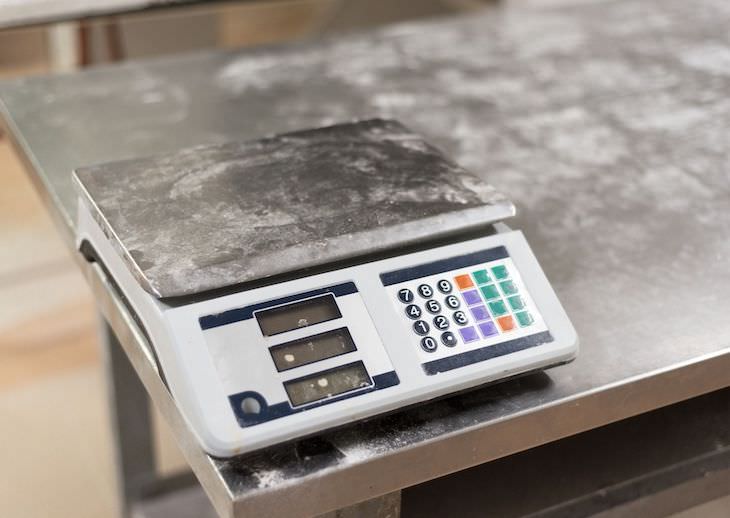
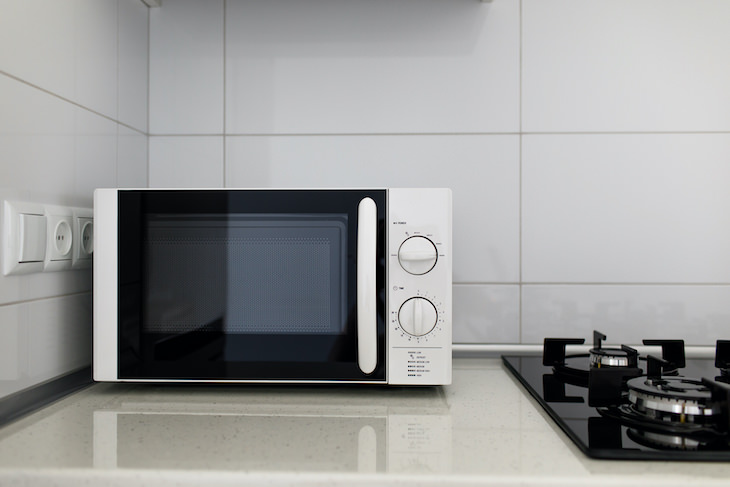
6. Pushing the weight limit

It turns out that every microwave has a
weight limit. Most dishes are well below the microwave capacity, and
that is why most of us never bother to check what that limit is.
However, experts advise being cautious with heavier dishes and large
frozen items. Microwaving something overly heavy can potentially damage
the turntable and motor, and strain the unit and shorten its lifespan.
The weight limit is usually printed on the microwave door or can be
found in the manual.
7. Boxing the microwave in

Not having enough space on the countertop
is a common problem. But even if yours is packed, try to find a spot
where the microwave can have some space. Boxing it in could prevent
proper airflow and cause damage over time. If the microwave is located
in a location where the heat vents are too close to a wall or cabinet,
restricting airflow, the electronics will get too hot and lead to an
early failure.
This means you should also avoid keeping anything on top of the
microwave, and of course, avoid keeping it too close to your oven or any
other heat source.
8. Microwaving sponges

A popular kitchen hack is popping a grimy
kitchen sponge in the microwave in order to clean it. Alas, we have to
tell you that if you don’t thoroughly disinfect your microwave after
doing so, it is better to refrain from this method. The kitchen sponge
is one of the dirtiest household items - it could harbor salmonella,
staphylococcus, and other bacteria for days after you use them.
While the dishes you clean with the sponge will dry and negate the
bacteria, the same can't be said about microwaves. Because they retain
moisture and are warm often, they are a perfect breeding ground for all
kinds of diseases. By putting a dirty sponge in the microwave you’re
risking the health of your family members and yourself.
9. Running a few appliances in the same circuit

Your microwave shouldn’t be run on the same
circuit as larger kitchen appliances. The reason kitchen devices need
multiple circuits is that “appliances, especially in the kitchen, have
been getting larger and larger over the years. The conflicting
electricity demands are too much for one circuit and can threaten to
damage or inhibit your appliances,” according to electrician Craig
Anderson.
While this is useful information to have, the average homeowner is not
expected to know how to figure out the kitchen circuits. It can be a
tricky business, best left to an electrician to handle.
10. Microwaving stainless steel mugs


We’ll finish with something that might come
as a surprise to some, but travel mugs could really damage your
microwave. The stainless steel reflects the waves instead of letting
your coffee absorb them, resulting in the waves bouncing between the mug
and the microwave surface and causing damage to the appliance. As a
result, your coffee won't heat up and the lifespan of your microwave
will be shortened. If you have a stainless steel travel mug, pour in the
liquid when it is already hot.